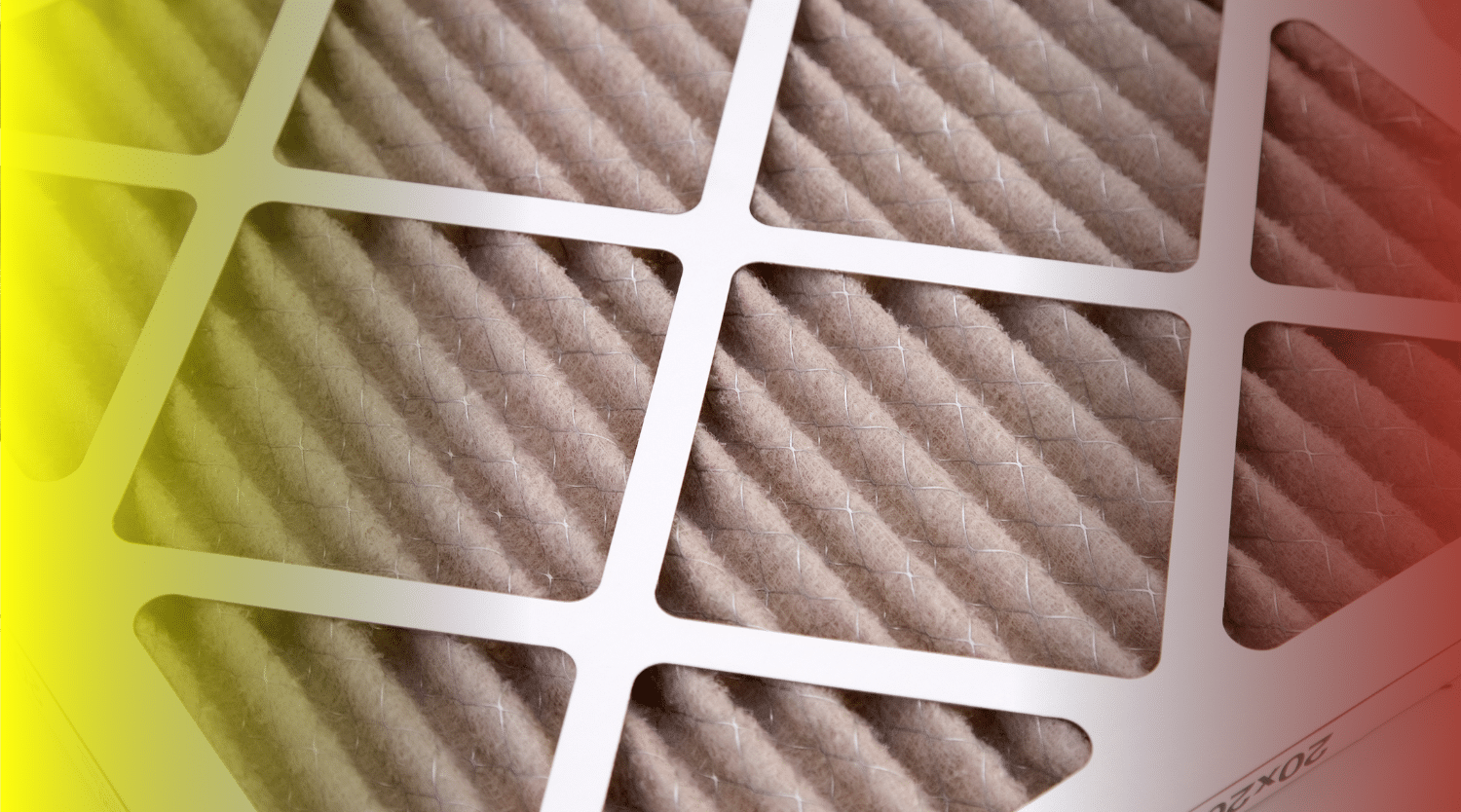A window AC filter change should be done every 30 to 90 days, depending on how often you use the unit and the conditions in your home.
Changing the filter on time keeps your air cleaner, helps your AC run more efficiently, and saves money on energy bills.
What Happens If You Don’t Change a Window AC Filter
When a filter gets clogged with dust and debris, it can’t do its job. Instead of blocking pollen, dust, and other particles, it lets them recirculate in your home. This leads to:
- Poor air quality can trigger allergies and asthma
- Weak airflow that makes your AC work harder
- Higher energy bills due to reduced efficiency
- More wear and tear on the unit system, shortening its lifespan
A dirty filter might not seem like a big deal, but it has a real impact on your comfort and health.
How Often Should You Do a Window AC Filter Change
Most homeowners should change or clean their window AC filter:
- Every 30 days if you run your AC often or live in a dusty area
- Every 60–90 days if you use it less frequently

Other factors that affect how often you need a change include:
- Pets: Pet hair and dander clog filters quickly
- Allergies: If someone in your home has asthma or allergies, more frequent changes help keep the air clean
- Climate: Homes in areas with high pollen or dust will need filter changes more often
- Usage: Running the AC daily means the filter fills up faster than with occasional use
Tip: Add a reminder at the start of each cooling season to check your filter. A quick check saves you from bigger issues later.
How to Change a Window AC Filter Step by Step
Changing a window AC filter only takes a few minutes:
1. Turn off and unplug the unit.
Always cut the power before working. This prevents shocks and keeps the fan or compressor from starting unexpectedly.
2. Locate the filter.
Most filters sit behind the front grille. Some units have a tab or latch; others require gently pulling the cover forward. If unsure, check your manual.
3. Remove the filter.
Slide or lift it out carefully, noting its position for reinstallation. A filter that looks gray, dusty, or coated in pet hair is overdue for cleaning or replacement.
4. Check the type.
Reusable filters are usually mesh with a plastic or metal frame. Disposable filters are typically cardboard or fiber. If in doubt, confirm with your manual.
5. Clean or replace.
- Reusable filters: Rinse with warm water and mild soap, then dry completely before reinserting.
- Disposable filters: Replace with the same size and type. Using the wrong size can reduce efficiency.
6. Reinsert the filter.
Slide it back in securely. A crooked filter lets unfiltered air pass through. Close the grille until it clicks or locks.
7. Restart the AC.
Plug it back in and turn it on. Airflow should feel stronger right away. If cooling is still weak, double-check the filter or consider a professional inspection.
Signs You Need a Window AC Filter Change Right Away
Even if you follow a schedule, there are signs your filter needs attention sooner:
- Weak airflow coming from the unit
- Dust buildup around the vents
- Musty or unusual odors when the AC runs
- Sudden spikes in energy bills
If you notice any of these, check the filter immediately.

How a Window AC Filter Change Improves Indoor Air Quality
Clean filters aren’t just about cooling; they improve the air you breathe every day.
Benefits include:
- Fewer allergens indoors: Filters trap dust, pollen, and pet dander
- Better breathing: Cleaner air reduces asthma and allergy triggers
- Comfort: Air circulates freely, cooling your home faster
- Home value: Regular maintenance supports long-term system health, something home inspectors look for during an inspection
According to the U.S. Department of Energy, replacing a dirty filter with a clean one can lower your air conditioner’s energy use by 5% to 15%. That’s better for your wallet and the environment.
Related Questions
Can I run a window AC without a filter?
No. Running without a filter allows dust and dirt to enter the unit, which can damage the system and harm your air quality.
What type of filter should I use for my window AC?
Always use the size and type recommended in your unit’s service manual. Using the wrong filter can reduce performance.
Do reusable filters work as well as disposable ones?
Reusable filters are effective when cleaned regularly, but disposable filters often provide a tighter fit and may trap smaller particles.
Does a window AC filter change really save energy?
Yes. A clean filter helps your AC run smoothly, lowering energy use and reducing your utility bills.
How does filter maintenance factor into a home inspection?
Inspectors look for signs of system neglect. A clean, well-maintained AC filter shows care and can prevent costly issues from being flagged.
Conclusion
A window AC filter change is one of the easiest ways to improve indoor air, reduce energy costs, and extend the life of your cooling system.
If you want a healthier, more efficient home, start with simple maintenance steps like this. For a deeper look at your home’s systems, schedule a professional inspection with P.I. Home Inspection Services.

